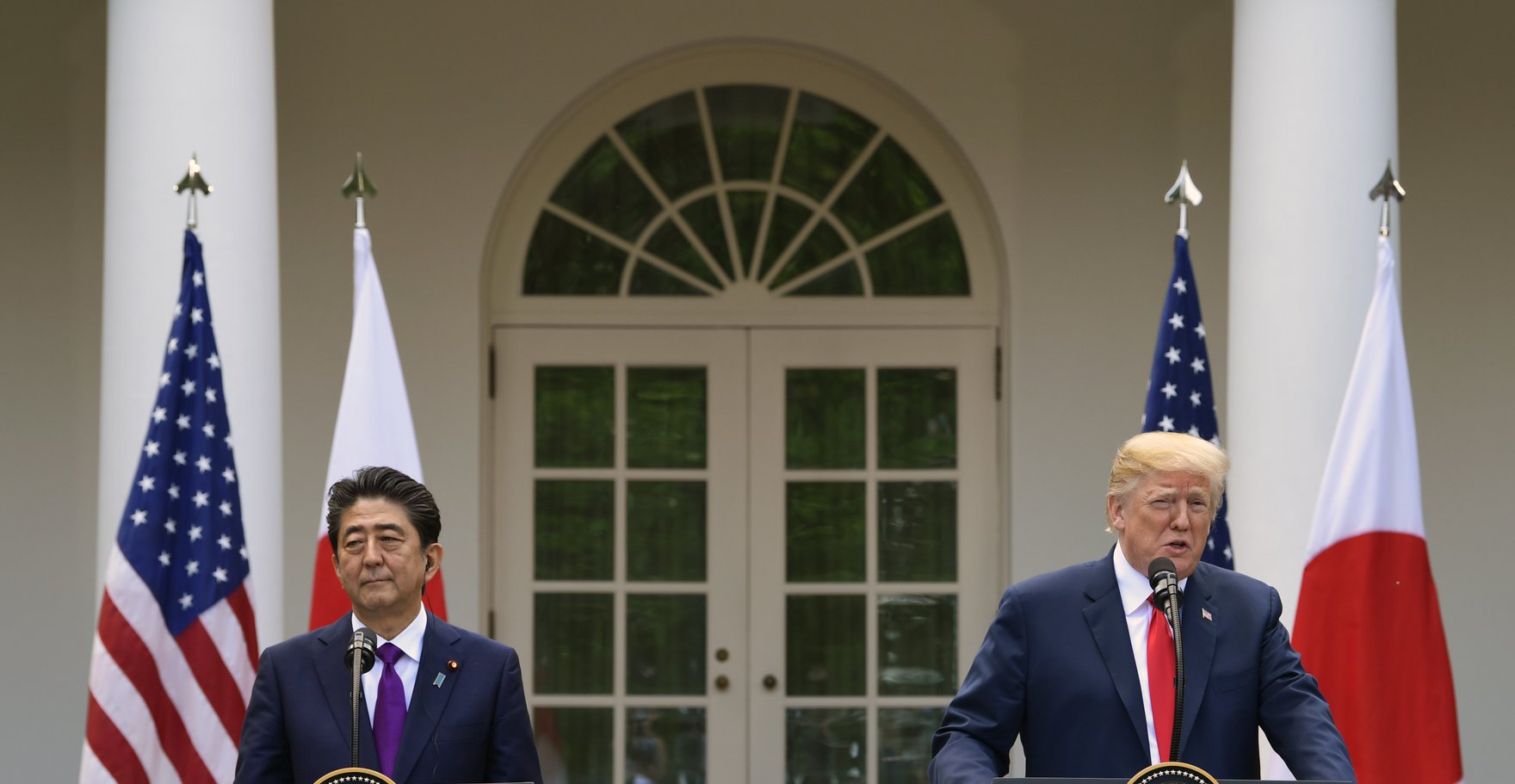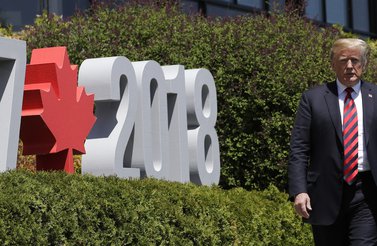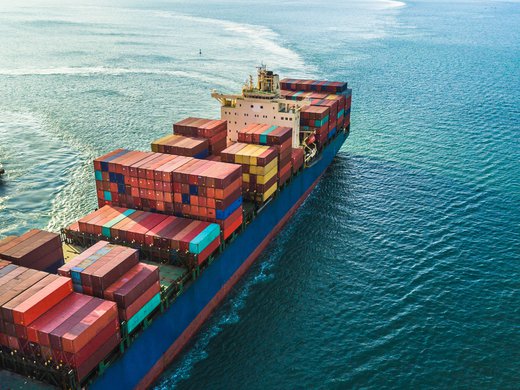China and the United States are currently the biggest threats to the multilateral, rules-based regime on which Canada depends. Last weekend, when he met with Japanese Prime Minister Shinzo Abe, Prime Minister Justin Trudeau had a unique opportunity to reconsider Canada’s approach to those challenges.
During Abe’s visit to Ottawa on April 27-28, both leaders reaffirmed Canada-Japan economic and political cooperation, but perhaps more importantly, it offered a window into Japan’s strategy for dealing with China and the United States.
China and the United States
Under Xi Jinping’s leadership, China has become more assertive — some would say aggressive — on the global stage in an effort to increase its influence, and to better promote its economic and political interests.
China’s Belt and Road Initiative (BRI) offers a strong example. The BRI’s objective is to build and finance the necessary infrastructure to facilitate trade in goods between China and the rest of Asia as well as with Africa and Europe. China is also offering BRI members the opportunity to join what it calls the Digital Silk Road. Here again, China offers to fund and build the necessary digital infrastructure so that participating countries can operate within the Great Firewall. In short, the BRI allows China to significantly expand its sphere of influence.
China has also adopted a national industrial policy to reduce its dependence on foreign technology. To this end, China is working to create leading firms in high-tech sectors like artificial intelligence. This policy poses a great challenge to global trading rules, which are based on the principle of non-discrimination vis-à-vis foreign firms.
United States President Donald Trump is also pursuing his “America First” economic policy, which abandons multilateralism in favour of bilateralism. This policy is premised on the ability to use economic might to negotiate deals in which the United States has a clear advantage. To bring parties to the negotiating table, the United States has imposed illegal (as per international trade rules) tariffs on a variety of goods, with the (so far false) promise that such duties would be lifted once a deal has been signed.
China and the United States’ nationalistic economic policies pose a direct challenge to the rules-based multilateral trading system. There is a serious risk that it could collapse, replaced by either a new Cold War (the West versus China and its BRI sphere, for example) or, even worse, a complete decoupling of the world’s major economies (everyone goes home and shuts their borders).
Japan’s Strategy
Either scenario would be bad news for the global economy, but the decoupling one would be the worst. In this case, while China, the European Union and the United States would survive relatively well, because of the size of their economies, Canada and the rest of the world would not; they would have to align with one of the major economies in question. Canada would surely side with the United States. This, of course, would establish Canada as a mere satellite of the United States.
Japan is in the same boat. A closure of the world economy, coupled with China’s control of land and sea in Asia, would cripple Japan’s economy. This is why, like Canada, Japan is working hard to reform the World Trade Organization (WTO). In particular, Japan is cooperating with the European Union and the United States to address the particular challenges that China’s non-market policies and practices present for the WTO’s existing rules.
Japan’s concerns for Chinese and US behaviour also explain why it made sure, with Canada’s support, to keep the Comprehensive and Progressive Agreement on Trans-Pacific Partnership (CPTPP, formerly the TPP) alive when President Trump pulled out, with the hope that the United States would ultimately rejoin. The TPP was initially launched by the United States as a means to keep Asia-Pacific countries closely linked to the West and to make it easier for them to resist China’s gravitational pull. In its current bilateral trade negotiations with the United States, Japan is offering much less than what the CPTPP offers, thereby keeping the latter as the better deal on offer for the United States.
Strategically, the CPTPP offers an important alternative to the China-led Regional Comprehensive Economic Partnership (RCEP) to countries in the Asia-Pacific region. It is interesting to note that Japan is also a negotiating member in RCEP.
The CPTPP’s survival is part of Japan’s Free and Open Indo-Pacific Strategy (FOIP). Japan developed the FOIP to make sure that sea routes from the Mediterranean Sea through the Indian Ocean and into the Pacific Ocean remain free and open so that Japan can continue exporting and importing, which is vital for its economy. The FOIP’s ultimate goal is to make sure that China is not the only game in town for BRI countries.
The FOIP’s toolbox offers everything from military equipment and technical assistance to development aid, infrastructure financing and more. With the FOIP, Japan does not want to confront China but to offer an alternative. In fact, Japan cooperates with China on some BRI initiatives.
Abe’s recent visit with Eastern European and Italian leaders — who had recently met with Chinese leaders to discuss BRI membership and investments — is a good indicator of Japan’s interest in discussing cooperation with European countries that are attracted by China’s BRI investments.
What Canada Could Learn from Japan
Canada should draw inspiration from Japan’s strategy. We have been too reactive in the way that we address the systemic challenges that the global economy is facing. We need to be more strategic and proactive, especially in the Indo-Pacific region. The region’s openness is of vital importance to Canada as well, especially as we seek to diversify our trade and reduce (to some degree) our economic dependence on the United States.
Abe and Trudeau’s meeting over the weekend offered some good news — they “discussed their shared vision for maintaining a free and open Indo-Pacific region based on the rule of law.” However, it is disappointing that the only FOIP-related initiative announced was a renewal of Canada’s “periodic deployments, over a two-year period, of Canadian Armed Forces aircraft, ships, and personnel under Operation NEON — a multinational surveillance initiative to counter North Korea’s maritime sanctions evasion.”
Canada may not have Japan’s means but, as a Group of Seven country, it could do a lot more to support Japan and the FOIP strategy.
Canada cannot simply continue focusing on developing its trade and investment relationships outside of the United States to diversify its trade flows and grow its economy. It should take a page out of Japan’s playbook and begin working to mitigate the long-term risks that China and the United States pose to the global economy.





